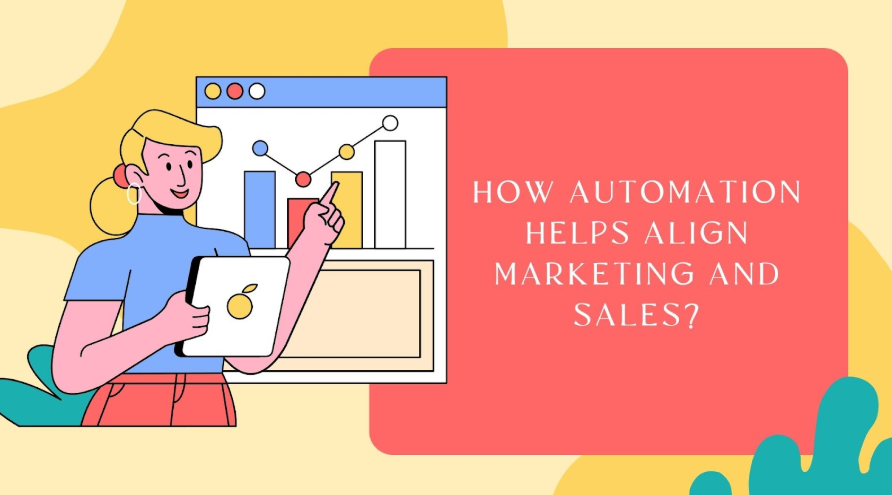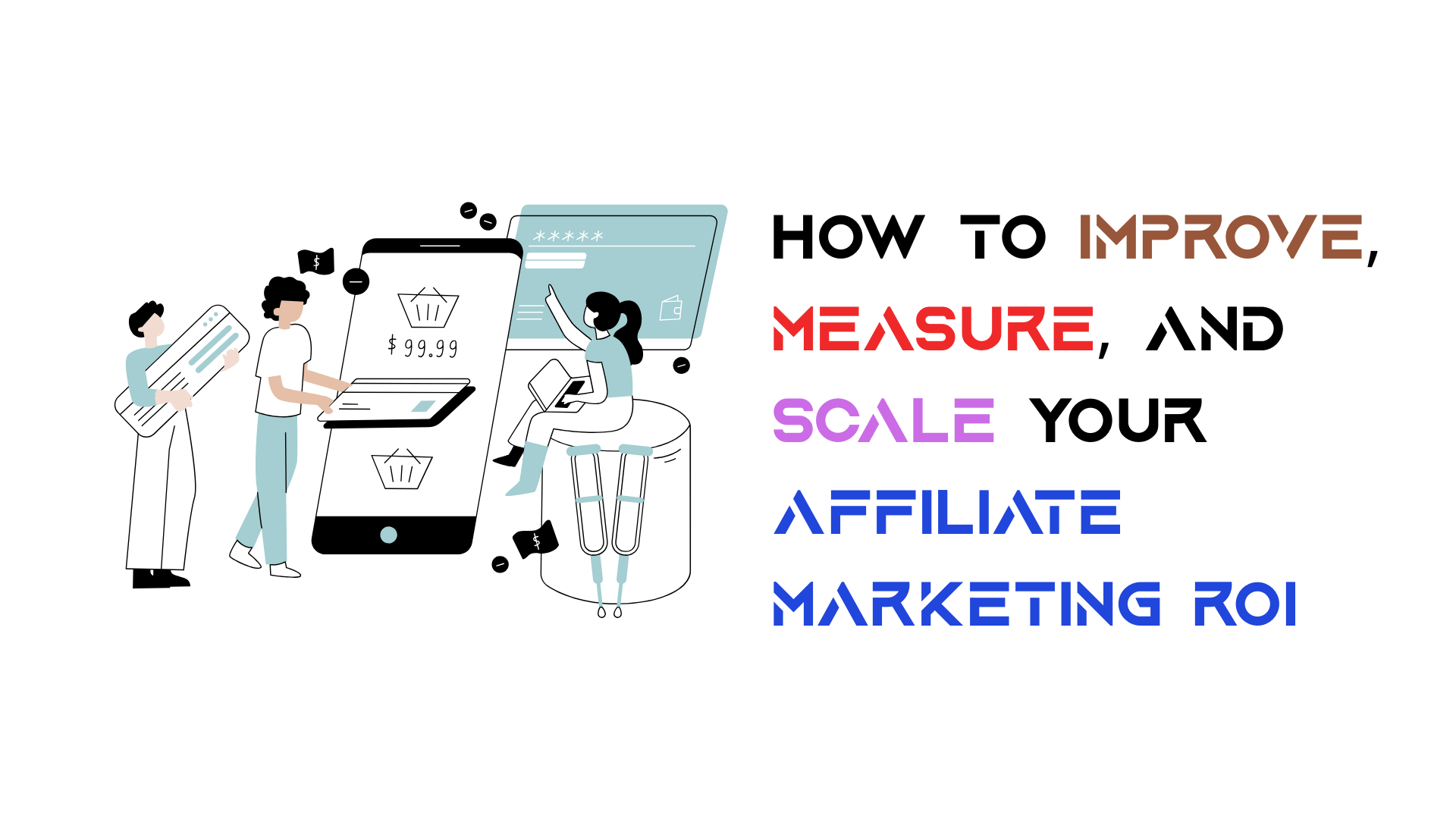Marketing and sales teams often work towards the same goal—bringing in new customers—but they do not always work together in the best way. Marketing generates leads, but sales often struggles to convert them because they may not be ready to buy. This is where automation helps.
By using automation, businesses can connect marketing and sales efforts in a way that makes lead nurturing smoother. Leads get the right information at the right time, and sales teams can focus on people who are actually interested. This means less wasted effort and more conversions.
In this blog, we will explore how automation can bring marketing and sales together, how it improves lead nurturing, and how businesses can get started.
Why Marketing and Sales Need to Work Together?

Marketing and sales teams usually have different roles, but they depend on each other:
- Marketing generates leads by running campaigns, sending emails, and promoting content.
- Sales talks to leads and tries to turn them into paying customers.
If these two teams do not communicate well, problems arise:
- Marketing may send sales unqualified leads who are not interested.
- Sales may not follow up quickly enough on good leads.
- Leads may receive mixed messages that confuse them.
Automation helps solve these problems by creating a structured process that moves leads smoothly from marketing to sales.
How Automation Helps Align Marketing and Sales?

Automation creates a bridge between marketing and sales. It removes manual work, reduces mistakes, and ensures that every lead gets the right attention at the right time. Here are some ways automation makes this possible:
1. Lead Scoring
Not all leads are ready to buy. Some need more time and information. Lead scoring is an automated way to rank leads based on their behavior.
- If someone downloads a free guide, they may not be ready to buy yet.
- If they request a demo, they are likely interested.
- If they visit pricing pages multiple times, they may be close to making a decision.
With automation, leads get a score based on these actions. High-scoring leads go straight to sales, while low-scoring leads stay in marketing campaigns until they are ready.
2. Automated Email Campaigns
Instead of manually following up with every lead, automation allows businesses to send emails based on customer actions.
- If someone signs up for a newsletter, they receive a welcome email.
- If they download a whitepaper, they get a follow-up email with related content.
- If they visit the pricing page but do not buy, they receive a reminder email.
This keeps leads engaged without requiring constant manual effort from the marketing team.
3. CRM Integration
A Customer Relationship Management (CRM) system stores lead details in one place. When integrated with automation tools, it helps marketing and sales stay updated.
- Sales teams can see which emails a lead has opened and which pages they visited.
- Marketing can track which leads sales has contacted and what their responses were.
- No lead gets lost because everything is tracked automatically.
4. Automated Notifications for Sales Teams
When a lead reaches a certain stage, automation can send alerts to sales teams.
- If a lead fills out a form, sales gets an instant notification.
- If a lead opens an email multiple times, sales knows they are interested.
- If a lead clicks on a pricing page, sales can reach out with a special offer.
This ensures that sales teams always follow up at the right time.
5. Chatbots for Immediate Engagement
Many businesses use chatbots on their websites to answer questions and collect lead information. Instead of making leads wait for a response, chatbots provide quick answers and gather details for sales.
- A chatbot can ask visitors about their needs and send the information to sales.
- It can schedule calls or demos automatically.
- It can provide helpful resources before a sales rep contacts the lead.
This keeps leads engaged without needing a person to be online 24/7.
How Automation Improves Lead Nurturing?
Lead nurturing is the process of building relationships with leads until they are ready to buy. Without automation, this can take a lot of time and effort. With automation, it becomes much easier and more efficient.
Here is how automation improves lead nurturing:
1. Personalized Communication
Leads respond better when they receive messages that match their interests. Automation helps businesses send personalized messages based on behavior.
- If someone watches a product demo, they get an email with customer success stories.
- If someone visits the blog often, they receive a curated list of useful articles.
- If someone abandons their cart, they get a reminder email with a discount.
This makes leads feel like businesses understand their needs.
2. Consistent Follow-Ups
Manually following up with leads is difficult. Some leads might be forgotten or ignored. Automation ensures that every lead gets followed up with at the right time.
- A lead receives an email 24 hours after downloading an ebook.
- A reminder email is sent three days later if they have not responded.
- A sales rep reaches out after a week if they are highly interested.
This consistency increases the chances of conversion.
3. Engagement Tracking
Automation tools track how leads interact with emails, websites, and ads. This helps businesses understand what works and what does not.
- If a lead keeps opening emails but does not reply, they may need a different message.
- If a lead clicks a link but does not buy, a follow-up email with a special offer may help.
- If a lead is not engaging at all, marketing can adjust the strategy.
Tracking engagement helps businesses make better decisions.
4. Seamless Handover to Sales
Automation makes sure that leads are warm before they reach sales. This increases the chances of success.
Sales teams receive leads who have already interacted with emails, blogs, and social media. They know what leads are interested in before making contact. Choosing the right automation tools can further enhance this process, ensuring a smooth flow of information between teams. Solutions like Power Apps vs Power Automate help businesses manage workflows efficiently, reducing manual effort and improving lead nurturing.
This creates a smooth experience for both the lead and the sales team.
The Role of LeadGenApp.io in Lead Nurturing
If you want better lead nurturing, you need a reliable way to collect and manage leads. LeadGenApp.io makes this easy. Here is why it is a great tool for businesses:
- Customizable Lead Forms – Create beautiful and high-converting lead forms without coding.
- Integration with CRM and Email Tools – Connect LeadGenApp.io with other tools to automate workflows.
- Lead Tracking and Insights – See where your leads come from and how they interact with your forms.
- Better Lead Quality – Use smart form features to filter out low-quality leads.
With LeadGenApp.io, businesses can collect leads effortlessly and nurture them using automation.
Steps to Start Using Automation for Marketing and Sales
If you want to use automation to align marketing and sales, here are some simple steps to get started:
1. Choose the Right Automation Tools
Look for tools that can integrate with your CRM and marketing software. Some popular options include:
- HubSpot
- Salesforce
- Marketo
- Mailchimp
- ActiveCampaign
2. Set Up Lead Scoring
Decide which actions indicate a lead is ready for sales. Assign points to different actions like:
- Opening an email (+2 points)
- Clicking a link (+3 points)
- Visiting the pricing page (+5 points)
- Requesting a demo (+10 points)
Once a lead reaches a certain score, they automatically move to sales.
3. Create Automated Email Sequences
Set up email sequences that nurture leads over time. Example sequence:
- Day 1: Welcome email with helpful resources
- Day 3: Email sharing customer success stories
- Day 7: Special offer or free trial invitation
- Day 14: Last follow-up with a sales rep invitation
4. Use CRM and Chatbots
Ensure your CRM records all lead interactions. Use chatbots to collect lead details and answer common questions instantly.
5. Track and Improve
Regularly check automation reports to see what is working. If certain emails get low engagement, tweak them. If leads are dropping off, adjust the nurturing sequence.
Conclusion
Automation makes it easier for marketing and sales teams to work together. It helps identify the right leads, nurtures them with the right messages, and ensures that sales teams engage at the perfect time.
By using automation, businesses save time, improve efficiency, and increase conversions. If marketing and sales teams work together with the help of automation, lead nurturing becomes more effective, and businesses grow faster.
Start small, test different strategies, and refine your automation process to get the best results.





